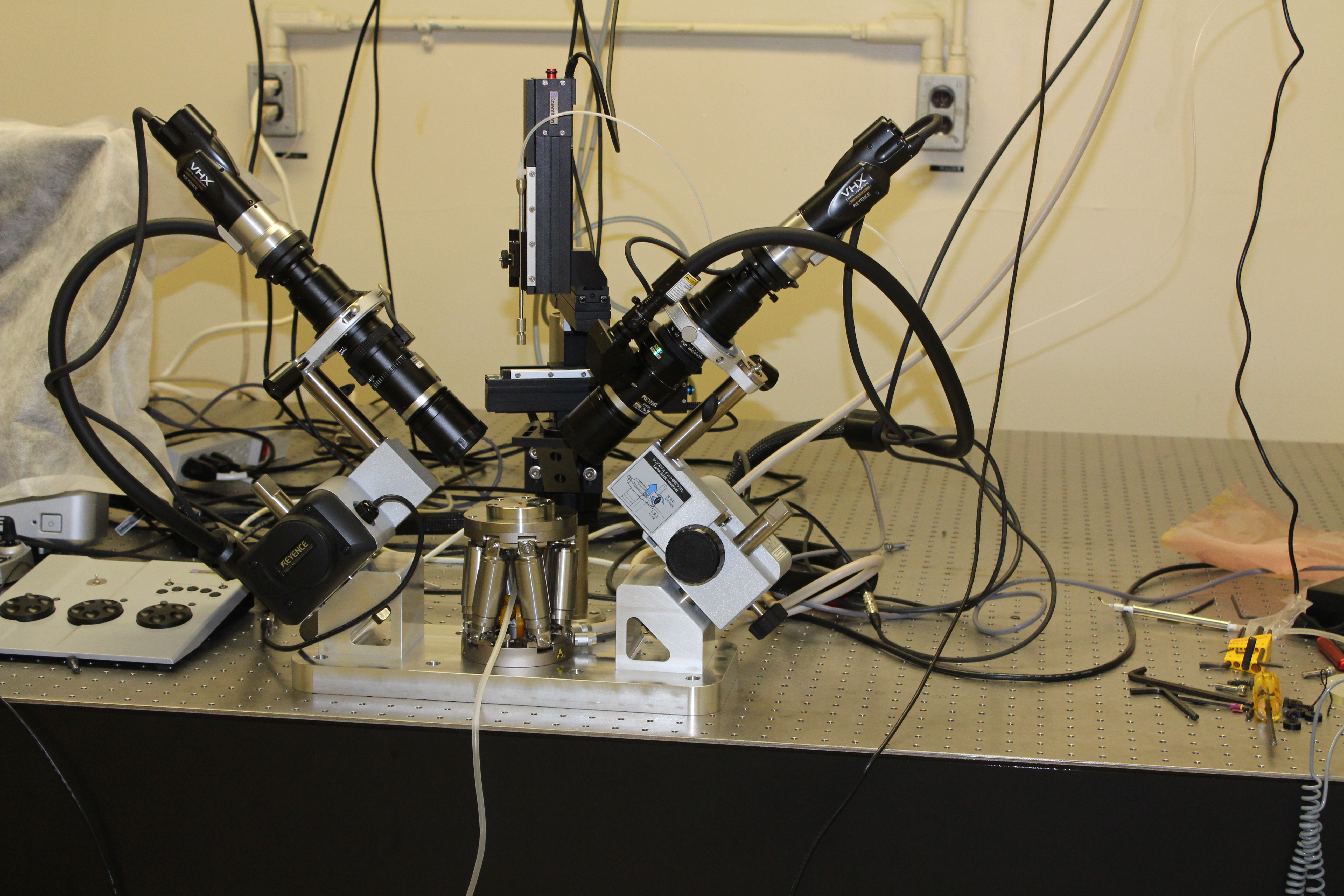Dawn Shaughnessy (16-SI-001)
Executive Summary
We are studying nuclear reactions in a high-energy-density plasma environment by establishing an experimental capability at Lawrence Livermore's National Ignition Facility to further research in neutron-induced reactions on short-lived and excited nuclear states, complex reaction networks and the effects of chemical fractionation in post-laser-shot debris, and charged-particle reactions in a true plasma as a measure of stellar reaction rates. This research will enable measurement of neutron reaction networks highly relevant to stockpile stewardship, nuclear forensics, and nuclear astrophysics.
Project Description
The future of nuclear science lies in the ability to measure nuclear reactions in regimes beyond traditional, low-flux particle accelerators to neutron-rich, high-energy-density plasmas found in astrophysical environments or thermonuclear explosions. The National Ignition Facility at Livermore provides a promising opportunity in a unique area of nuclear science that goes beyond low-flux accelerators to bring nuclear reaction research into these high-energy-density plasma environments. A fusion capsule at the facility generates temperatures and densities that more closely resemble the interior of massive stars or thermonuclear explosions. We plan to establish an experimental capability to address research areas of importance to several Laboratory mission areas including neutron-induced reactions on short-lived, excited nuclear states; complex reaction networks and the effects of chemical fractionation in post-shot debris; and charged-particle reactions in a true plasma as a measure of stellar reaction rates. These synergistic research areas require development of new methods for adding materials to target capsules, platforms for tailoring neutron outputs, and characterization of debris. Currently, the National Ignition Facility is the only facility where nuclear reactions can be studied in a high-energy-density plasma environment. Our research here will be performed in collaboration with various university partners, including University of California, Berkeley, and the University of Notre Dame in Indiana, and will help attract the next generation of nuclear scientists to address future mission needs.
We expect to provide new methods for adding small amounts of target atoms into hohlraum laser target capsules, including radioactive and nonmetallic species. This will enable us to study the contribution of excited nuclear states to the integrated neutron-activation cross sections relevant to weapon physics. In addition, we will create designs to measure reactions at neutron energies less than a megaelectronvolt. Modeling will be performed through simulations of high-compression capsules and MCNP model (Monte Carlo n-particle code for neutron, photon, electron, or coupled-particle transport) calculations of moderating materials added to the hohlraum or fielded externally to the capsule assembly. We also intend to examine the debris ejected from a National Ignition Facility shot to provide quantitative description of any fractionation processes that occur as the debris is distributed. This is crucial to measuring cross sections, especially if corrections must be made to account for debris losses caused by chemical affinity to the collecting medium. Finally, we will extend debris collection to low-atomic-number, stellar-reaction products through addition of the beryllium-7 radionuclide to the hohlraum exterior to quantify collection efficiency. The final task applies all the developed platforms to measuring the boron–beryllium reaction as part of a staged approach to ultimately measure the helium–beryllium stellar-reaction rate. All these platforms will be applied to the measurement of neutron reaction networks highly relevant to stockpile stewardship, nuclear forensics, and nuclear astrophysics.
Mission Relevance
The Laboratory's nuclear, chemical, and isotopic science and technology core competency identifies the need to fill gaps in key nuclear science areas such as plasma nuclear science, fractionation in nuclear decay, nuclear stability, and short-lived nuclei as its primary research priority. Our research project addresses these research areas: calculated evaluations of radiochemistry data often do not match analytical results of post-shot debris analysis because of missing data or incorrect models. These effects can only be quantified through measurements at the National Ignition Facility that are not possible at other facilities. In addition, our theoretical and experimental research into high-energy-density plasma environments is relevant to the core competency in high-energy-density science and supports the DOE goals in both energy and national security to transform our understanding of nature and strengthen key science, technology, and engineering capabilities to modernize the national security infrastructure.
FY17 Accomplishments and Results
In FY17, we (1) developed target injection, which included micro manipulators, microscopes, and automated multidimensional capsule placement, and evaluated solvents for adding dopants in uniform layers on inner capsule target surfaces; (2) finalized results for gold-196m nuclear data; (3) prepared results on fractionation of fission products, measurement of nickel and cobalt isomeric cross sections, and formation of crystalline particles; (4) fielded a specialized sample canister for irradiating soil and plastic and created MCNP models of the canister and surrounding hardware; (5) fielded large-area solid radiochemistry collectors; (6) fielded carbon foils to establish production of beryllium-10 in capsules and from room return neutrons; and (7) were awarded Discovery Science Campaign shots at the National Ignition Facility in collaboration with Notre Dame.
Publications and Presentations
Cassata, W. S., et al. 2016. "Determination of Gaseous Fission Product Yields from 14 MeV Neutron Induced Fission of 238U at the National Ignition Facility." Journal of Radioanalytical and Nuclear Chemistry 309 (2): 899–908. doi:10.1007/s10967-015-4662-8. LLNL-JRNL-672362.
Gharibyan, N., et al. 2016. "Recent Advances and Results from the Solid Radiochemistry Nuclear Diagnostic at the National Ignition Facility." Review of Scientific Instruments 87 (11). doi:10.1063/1.4960316. LLNL-JRNL-694182.
Shaughnessy, D. A., et al. 2017. "Development of Stellar Reaction Rate Experimental Platforms at NIF." Presentation at the NIF and JLF User Group Meeting, Livermore, CA, 6–8 February 2017. LLNL-PRES-721363.
   





